Law
AVIATION LAW FOR THE MICROLIGHT PILOT
Introduction
In this section we will cover the most common rules that affect microlight pilots. Microlight rules are embodied in the CAA rules. CAA rules Part 12, 91, 103, 149, all have in them rules which are applicable to microlight pilots. RAANZ is an Approved Organisation under Part 149 and the majority of microlight rules are in Part 103. Part 91 covers the General Operating rules which all aircraft operate under. Part 12 is the accident and defect reporting rule.
The CAA uses a number of other documents to convey further information and elaborate on the rules of flying- eg Advisory Circulars (ACs), etc.
NZAIP - New Zealand Aeronautical Information Publication. These are used to cover orders, procedures and information. The AIP is split into four volumes:
- Volume 1 is the Planning Manual which provides comprehensive information of rules and operations, etc for New Zealand. It is not essential for microlight flying.
- Volumes 2 and 3 are about IFR flight and not relevant to microlight flying.
- Volume 4 is the Visual Flight Guide and is importnat to microlight flying. It contains operational information, aerodrome charts, and details of procedures required for operations under VFR for land aerodromes. This document is to be used by the microlight pilot flying in and out of licensed aerodromes.
The AIP Supplement contains information which is of a temporary nature not urgent enough to warrant promulgation by NOTAM (eg airshows, temporary works or procedures), or that contains extensive text or graphics and cannot be clearly promulgated by NOTAM. AIP Supplements are distributed by post to holders of any of the NZAIP volumes, and available off the NZAIP website.
NOTAMs (Notices to Airmen) are used to promulgate temporary changes to operationally significant information that requires immediate dissemination. NOTAM are issued via the AFTN, and are avaiable via teh Air Traffic Control system and off the IFIS website.
Aeronautical Charts A number of Aeronautical Charts are published including Enroute Charts, Area Charts, etc. The charts essential for visual navigation flights around New Zealand are the VNC Visual Navigation Charts. A description of all aeronautical charts is given in the NZAIP MAP Section. Charts are available from the Airways AIP shop website.
Responsibility of the Pilot in Command
The pilot in command is responsible to ensure that the microlight has valid documentation, is properly preflighted (i.e. not overloaded or badly loaded), has sufficient fuel and oil and the microlight is safe for the flight.
The pilot shall make final decisions, is responsible for reporting defects (if the microlight is not theirs) and is ultimately responsible if any rules are broken.
In two seaters where two licensed pilots are flying, one must always be nominated pilot in command.
Drink and Drugs
A "no-no" need any more be said! If a pilot is impaired in any way, he should not be flying.
If on any medication, consult your doctor as to effects before flying.
Operation of Controls
Only licensed pilots (including authorised students) are allowed to operate controls. This includes ground taxiing. The only exception to this is in two seaters where there is an instructor onboard and giving instruction.
Dropping of Articles
Any person dropping anything from a microlight is responsible for the article and where it may land. No article may be dropped that creates a hazardous situation.
Carriage of Persons on an Aircraft
No person shall be carried on a microlight unless the pilot in command has a passenger rating and meets the currency requirements.
Classification of Operations
Private - not used for hire or reward. Microlight flying is a private operation. Instruction is considered a private operation as the student is considered "crew" not passenger. Where a passenger is paying for a joyride the operation must be carried out under CAA Part 115.
Documents
All flight crew shall keep a logbook. This may be a bound hardcover book or electronic log (eg spreadsheet or database). The standard CAA logbook is recommended- these are available through RAANZ, affiliated clubs, or the CAA website. Permanent entries shall be made within 7 days of the flight and the logbook shall be kept as a permanent record of flight experience.
If a radio is used on the microlight then a radio license is required to be kept with the radio.
A CAA flight permit shall be obtained for class II microlights. This flight permit is valid for 12 months and is renewable after a survey by an Inspection Authority Holder. A flight permit will only be given where the microlight has type acceptance and has been inspected by an approved person. Registration marks must be affixed in accordance with CAA Part 47.
Test Flying
Approval must be held from RAANZ before a person may undertake a test flight in a microlight. All Senior Instructors are deemed to be Test Pilots.
Instruments
An altimeter, compass, and airspeed indicator are the minimum instrumentation required for all flights.
Emergency Locater Transmitters (ELTs)
Any microlight on a flight greater than 10NM from the point of departure must carry an ELT (406MHz). The ELT may be permanently fitted to the aircraft, or be a Personal Locater Beacon (PLB) carried by the pilot or passenger. The ELT/PLB must be registered with the Rescue Coordination Centre (RCC) in New Zealand including contact details of the aircraft operator. In the case of a club aircraft where the aircraft and PLB are shared among many users, it is important that a register of the person flying the aircraft and their mobile phone number is available to the person whose contact details are registered with the RCC.
Planning of Flights
The pilot in command must plan his flights to ensure safety and this must include:
- the checking of meteorological conditions.
- the checking of NOTAMS that may affect the flight
- the checking of radio facilities if required.
- the checking of any licensed aerodrome procedures to ensure microlight flight can be conducted safely and include gaining the necessary approvals.
No flight is permitted within 3NM of a licensed aerodrome unless approval is gained from a Senior Microlight Instructor, or a Category "A", or "B" Instructor. Where flight in to or out of an attended aerodrome is contemplated, clearances must be obtained from the Air Traffic Services Unit at the aerodrome.
- The pilot shall satisfy himself as far as possible as to the safety of landing zones intended for use.
- He shall check air traffic rules and procedures applicable to the flight (i.e. entry into controlled airspace).
Minimum Safe Heights
No flying over crowds is permitted. The rule states that you must not fly over a congested area. In addition, unless taking off or landing, no flight shall be conducted at less than 500 feet above ground level. The only exemptions to this rule are if in a designated low flying area with an instructor. If low flying is required as an operational requirement, approval must be gained from RAANZ.
VFR Flight Plan (SARWATCH)
Each pilot-in-command of an aircraft shall submit a flight plan to an appropriate ATS unit prior to the start of each flight under VFR:
- that proceeds more than 50nm from shore; or
- if the pilotincommand rquires an alerting service.
Note: In controlled airspace ATC can authorise special VFR flights when in a CTR with a cloud base down to 600ft and a visibility of 1500 metres. Special clearances are required in other CTAs to allow operation up to the cloud base.
Cross Country Flight
All microlight flight is VFR flight and must be visually navigated. Prior to undertaking a cross country flight or any flight during which it is proposed to proceed beyond gliding distance of land in a microlight, the pilot is recommended to advise a responsible person of their intentions and specify any action to be taken by that person if they do not receive notification of the safe termination of the flight. Alternatively a SARWATCH may be filed with ATC.
When flight is conducted beyond gliding distance of land, a life jacket shall be worn.
Appropriate charts shall be carried on all crosscountry flights.
Fuel and Oil
Sufficient fuel and oil shall be carried for the safe conduct of the flight including allowances for any change in meteorological conditions and/or delays, plus a reserve for contingencies and landing at an alternative site.
General Operations
Al flight shal be conducted clear of cloud and beneath the ceiling, i.e. beneath the base of the lowest cloud covering more than half the sky.
All circuits should be flown at a minimum of 500ft AGL or at the circuit height specified on landing charts for the appropriate aerodrome. The first turn after takeoff first turn shall be made at 500ft AGL unlesss there is a requirement to turn earlier due to obstacles, but nevertheless it must be at a safe height.
No flight at night is permitted. That means between Evening Civil Twilight (ECT) and Morning Civil Twilight (MCT).
All flight conducted by a novice pilot or student pilot shall be under the supervision of an Instructor.
Right of Way Rules
If you have right of way you are expected to maintain your current flight heading and speed to allow the conflicting traffic to avoid you. If you have to avoid traffic, ensure you pass well clear. Never assume the other aircraft has seen you.
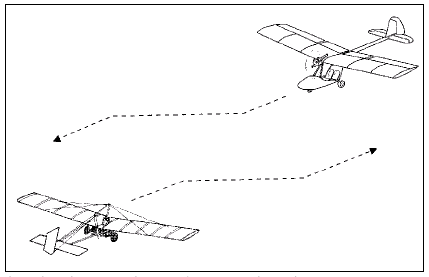
Fig. 120 Approaching head on Each aircraft turns to the right.
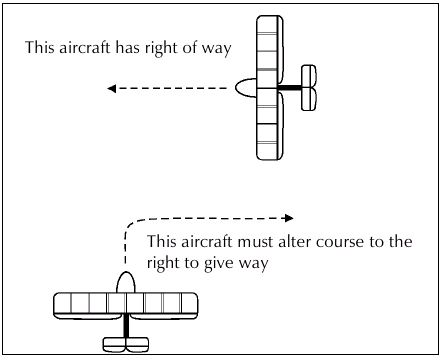
Fig. 121 Converging - The right hand rule applies except that power driven aircraft give way to gliders or aircraft towing objects.
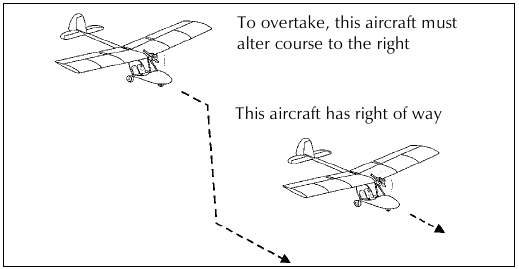
Fig. 122 Overtaking - The slower aircraft has the right of way. If overtaking, alter course to the right.

Fig. 123 Landing Any aircraft manoeuvring on the ground must give way to landing aircraft of aircraft on final approach.
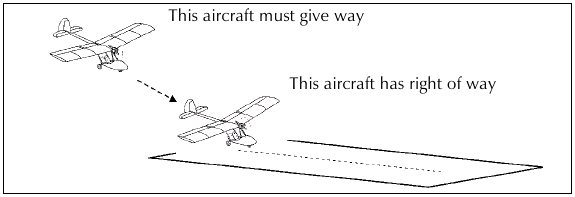
Fig. 124 If two aircraft are landing at the same time the lower aircraft has right of way.
Aircraft when landing must land to the right of any aircraft which has just landed or is about to land or which is taking off or about to take off.
An aircraft when landing must land on the left to leave reasonable room to the right for other aircraft.
Turn left after landing, unless instructed otherwise.
Everyone must give way to aircraft making an emergency landing.
Takeoff no takeoffs are permitted when there is a danger of collision.
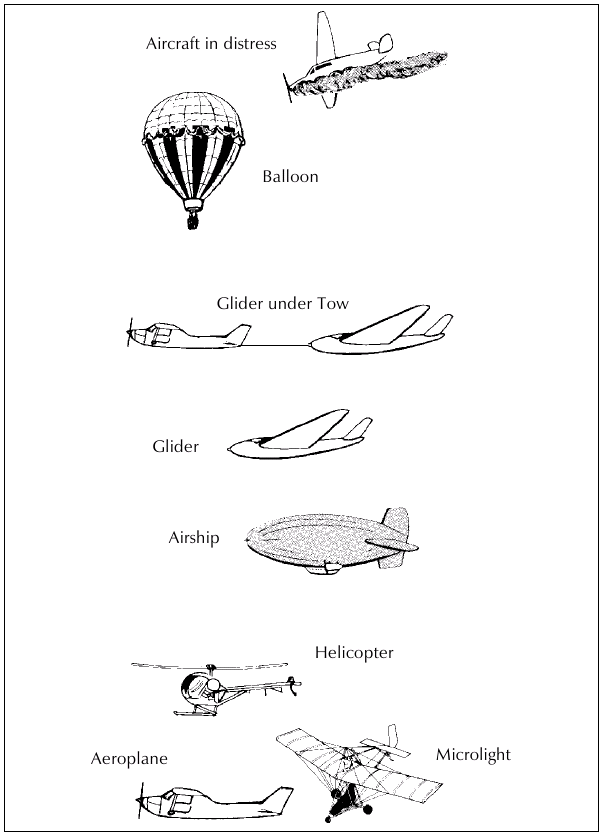
Fig. 125 Aircraft priority relative to manoeuvrability.
Accidents
A notifiable accident is one where a person is killed or seriously injured or the microlight suffers serious damage or structural failure that adversely affects its structural strength, performance, or flight characteristics and requires major repair or component replacement. If a microlight is overdue on a flight an accident is deemed to have occurred.
The pilot in command, or, if he is incapacitated, the operator of the microlight shal notify the Civil Aviation Authority by the quickest means possible (0508 ACCIDENT, or 0508 222 433), and, if damage to a third party person or property occurs, the police must also be informed. Air Traffic Service Units are available to assist in the reporting of accidents. The CAA website has electronic means of reporting accidents, occurences and defects.
Notification should include the following:
- Microlight Type and Registration.
- Name of owner, operator and pilot and any passenger.
- Date and time of accident.
- Point of departure, intended landing point and last known position.
- Any injuries or death and/or damage including third parties.
- Details of the accident.
From the time of accident the microlight is in the custody of the CAA, no person shall have access to the microlight or shall remove the microlight or any part from the accident site without the approval of the CAA except to:
- Remove persons or animals from the accident site.
- To remove the microlight to prevent obstruction to the public or to air traffic or other transport.
- The microlight can be brought to a place of safety if wrecked on water.
Anything that is removed from the aircraft should only be as far away from the aircraft as to ensure its safety. The Air Accident Inspectors have total control of the accident site. After the investigation is concluded al held wreckage must be returned to the owner.
TYPE RATINGS
Microlights are classified into five groups.
| Group A | Weight Shift | Controlled by lateral and longitudinal movement of the pilots body in relation to a control bar or A frame rigidly attached to the wing. |
| Group B | Three Axis Control | Control about the lateral axis is achieved by elevator or canard or sling, and about the longitudinal axis by ailerons, differential spoilers or wing warping and about the normal axis by rudder. Microlights in this ategory shall be stick and rudder control. |
| Group H | Microlight Helicopters | Conventional helicopter controls. |
| Group P | Powered Parachutes | Control is by pulling on the steering risers connected to the chute and throttle operation. |
| Group R | Rotorcraft or Gyrocopters | Control is through the cyclic to the rotor head. The rotor is free running with forward thrust provided by a separate propeller. |
A type rating is required for each separate aircraft type (manufacturer and model) in the above groups. This includes aircraft of the same type but which have a different engine or propeller operation.
After demonstrating competence to your instructor, he/she may endorse your logbook accordingly. During the course of your microlight flying, you will probably have the opportunity to pilot microlights of various types and configurations.
When such an opportunity arises there are several points to consider. It is important to remember that the handling and performance of the various types can differ markedly. It is not acceptable to merely jump in and fly a new type without a type rating.
Wherever possible, observe the microlight flying, especially landing and taking off. In this way you can get an appreciation of what to expect in the way of ground run and performance.
Talk to your instructor about handling the aircraft, especially any noteworthy aspects such as what to expect at the stall onset etc. Make sure you know thoroughly:
- Stall speed.
- Liftoff speed.
- Climb speed.
- Cruise speed.
- Approach speed.
- Takeoff, climb, cruise and descent R.P.M.
- VNE and manoeuvring speeds.
- Weight and balance figures.
- Know the fuel quantity on board and consumption rate, as well as being familiar with the fuel cocks etc.
- Ask to be shown a preflight of the microlight. Ask about any unusual features you note.
- Get strapped in and familiarise yourself with the operation and location of all controls. It does not hurt to spend time on the ground in the cockpit until you feel happy with the layout.
- Note the attitude of the aircraft as it sits on the ground and visualise the landing attitude.
- If you are going to be flying a microlight employing a different control method, make sure you understand just how it works. Get it straight in your mind. Unless you are comfortable with the idea, you may not be ready.
- Your first solo flight in a new microlight should be made in good weather conditions. You don't want to have to cope with a strong crosswind for example. Furthermore, the field used should be big enough to provide a comfortable margin for both takeoff and landing.
The simple preparations above should help to make a type conversion easier and safer. Strangely, it is often the experienced pilot of other types who leaps into a microlight for the first time who gets into trouble. No matter what your flying experience or background, respect the microlight and listen to the advice of those who know the aircraft.
Law and the Microlight Instructor
Requirements for Issue of the Instructor rating are:
- Be the holder of an advanced pilot certificate.
- Demonstrate to a RAANZ Testing Officer the ability to give ground instruction and ability to fly, within the group ratings for which he has ratings, all exercises being outlined in the RAANZ procedures manual.
- Be recommended by his club.
- Pass an oral exam on VFR Operations, Principles of Flight, Preparation and Operation of Microlights and Micrometeorology as in the RAANZ procedures manual.
- Either have 100 hours microlight time including 10 hours crosscountry time or 100 hours total flight time in aircraft of which 50 must be in a microlight with 10 hours crosscountry. (Where the applicant has considerable aviation experience special conditions apply.)
- Where the applicant has considerable aviation experience these requirements may be reduced. If a current A, B, or C Instructor Aeroplane, the pilot shall demonstrate competence to a Senior Microlight Instructor. If having previously held a Cat A, B, or C Instructor licence then 15 hours of microlight flight time is required before supervising microlight operations including crosscountry No. 5 in the RAANZ procedures manual.
- Be a financial member of RAANZ.
- Renewal - A check must be completed with a RAANZ Testing Officer in the last 12 months and a current medical is required.
- Recent Experience - The privileges of an instructor shall not be exercised unless he has carried out three takeoffs and landings in the last 90 days.
- Privileges - Give ground and flight instruction and authorise solo flight by the holder of a novice pilot certificate.
Only Senior Instructors may perform flight tests and send applicants on their first solo. Instructors are considered trainee and must liaise with Senior Instructors.
Water Operations
A water rating is required to operate a microlight aircraft from the water. Contact an appropriately qualified instructor, as there are different piloting techniques to be learnt when operating from water because of:
1. The inherent dangers of water operations. These include:
- Extra Preflight Considerations e.g. water in the floats and hull, corrosion due to salt water and extra stress on the airframe.
- Take off and Landing techniques.
- Taxiing considerations (lack of low speed control).
- Weathercocking tendencies.
- Glassy water operations.
- Wind and water current assessment.
- Emergency procedures.
2. The variety of types and combinations of water aircraft either Trikes or 3 Axis, with any of the following:
- Floats,
- Hulls,
- Amphibious,
- Air Dinghy.
A microlight operating from water is bound by the same regulations as a boat and therefore the pilot must be conversant with:
- General Harbour Regulations,
- Water Recreation Regulations,
- Rules for the Prevention of Collision at Sea.
It is possible to modify most microlights for water operations providing that the modification criteria have been followed. Most water aircraft are:
- heavier,
- have greater keel surfaces,
- greater frontal area (more drag),
- lower centre of drag.
This combination gives the aircraft a cumbersome feel when compared to its land counterpart. A training guide for water operations is available from RAANZ at the current address.
Flight Certificates: Requirements for issue
Novice
- Medical Declaration.
Intermediate
- Novice Pilot certificate
- At least 25 hours flight time.
- Pass exam on Law, Nav., Met., and Technical Knowledge, (Rotorcraft and Helicopter where applicable).
- Demonstrate knowledge and ability and perform a flight test.
- If a PPL, demonstrate competence to a Senior Instructor.
Advanced Local
- Completed Advanced Local cross-country requirements.
- At least 40 hours flight time.
- Demonstrate knowledge and ability to conduct flight manoeuvres.
Advanced National
- Completed Advanced National cross-country requirements.
Passenger rating
- An endorsement to carry a passenger is available to Advanced pilots when the applicant has 45 hours flight time including 35 hours Pilot in Command and has demonstrated competence to a Senior Instructor.
Note: the difference between Advanced Local and National cross-country flight requirements is in the crosscountry syllabus.
Recent Experience
Novice
- No solo until basic exercises completed. Continue under Instruction.
Intermediate, Advanced Local and Advanced National
- Three takeoffs and landings every 90 days.
Privileges
Novice
- PIC under instructor supervision for purposes of increasing skills or requalifying for expired licence.
Intermediate
- Limited to 10NM of the takeoff point.
Advanced Local
- Up to 50NM from base airfield
- If flying within 5km of a licensed aerodrome, must be briefed by an Instructor.
- Beyond 50NM all flights shall be briefed and authorised by an Instructor
Advanced National
- Unlimited
Medical certificates are valid for up to four years if under 40, two years if over 40, or as specified on the certificate. If there is a medical condition, the Doctor may specify a shorter time and must indicate whether the applicant can carry passengers.
